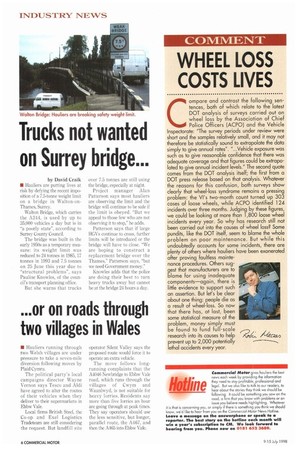COMMENT
Page 8

If you've noticed an error in this article please click here to report it so we can fix it.
WHEEL LOSS COSTS LIVES
ompare and contrast the following sentences, both of which relate to the latest DOT analysis of surveys carried out on wheel loss by the Association of Chief Police Officers (ACPO) and the Vehicle Inspectorate: "The survey periods under review were short and the samples relatively small, and it may not therefore be statistically sound to extrapolate the data simply to give annual rates". "...Vehicle exposure was such as to give reasonable confidence that there was adequate coverage and that figures could be extrapolated to give annual incident levels." The second quote comes from the DOT analysis itself; the first from a DOT press release based on that analysis. Whatever the reasons for this confusion, both surveys show clearly that wheel-loss syndrome remains a pressing problem: the VI's two-month count turned up 303 cases of loose wheels, while ACPO identified 124 incidents over three months. Judging by these figures, we could be looking at more than 1,800 loose wheel incidents every year. So why has research still not been carried out into the causes of wheel loss? Some pundits, like the DOT itself, seem to blame the whole problem on poor maintenance. But while this undoubtedly accounts for some incidents, there are plenty of others where hauliers have been exonerated after proving faultless maintenance procedures. Others suggest that manufacturers are to blame for using inadequate components—again, there is little evidence to support such an assertion. But let's be clear about one thing: people die as a result of wheel-loss. So now that there has, at last, been some statistical measure of the problem, money simply must be found to fund full-scale research into its causes to help prevent up, to 2,000 potentially lethal accidents every year.












































































































